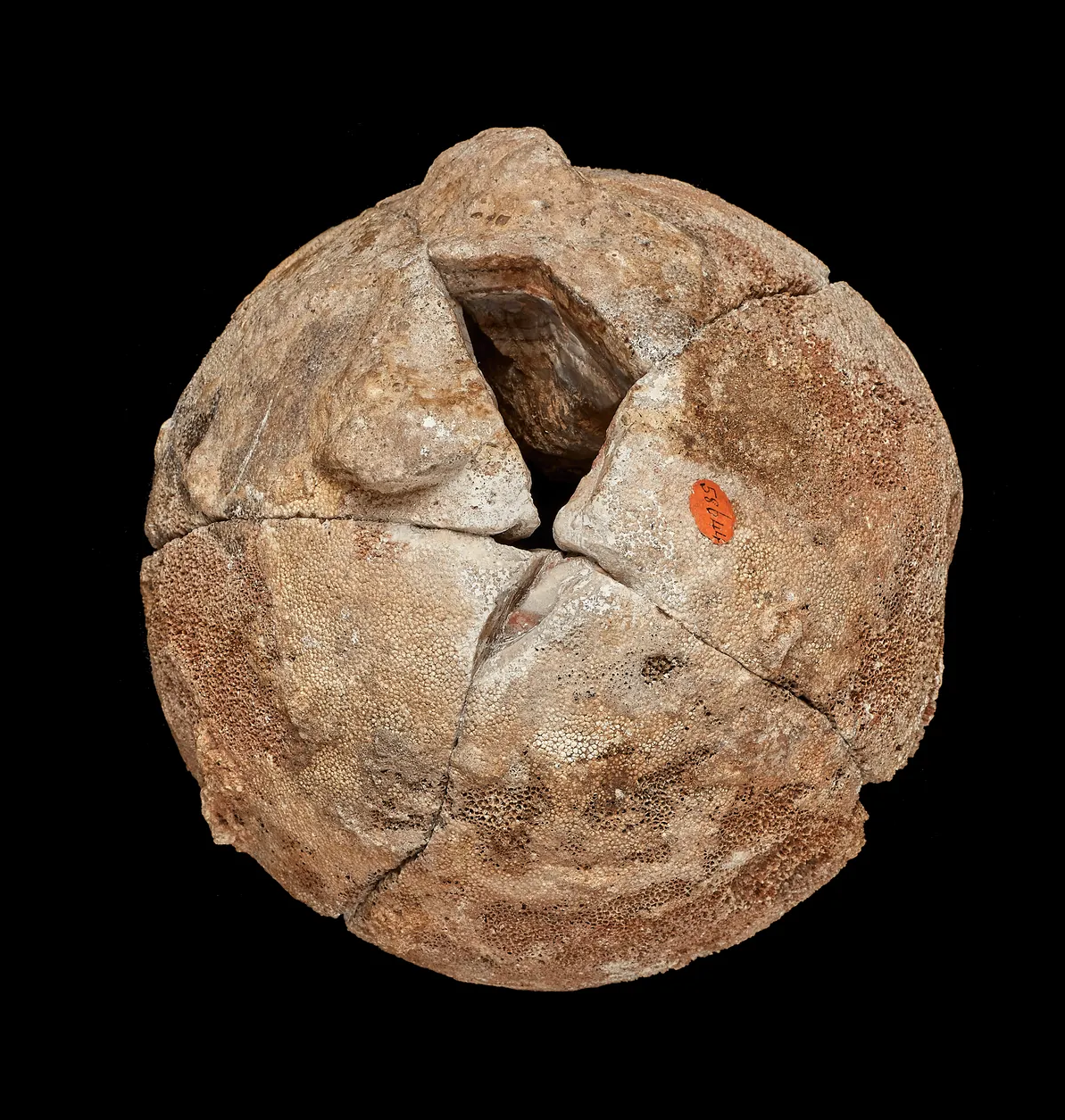A pretty pink and white agate sitting in the Natural History Museum, London’s Mineralogy Collection since 1883 has turned out to be even more stunning than thought for a surprising reason. Around 15 centimeters (6 inches) across, almost completely spherical but otherwise unassuming, the specimen has remained in the collection for the last 175 years, until a chance finding earlier this year revealed it to be a dinosaur egg.
The specimen’s attractive interior colors caught the eye of Robin Hansen, one of the Mineral Curators at the NHM who helped prepare the specimen when it was selected to go on display in 2018. Then a trip to a mineral show in France helped reveal the significance of the “rock”.
‘While I was looking around the show, a dealer showed me an agatised dinosaur egg, which was spherical, had a thin rind, and dark agate in the middle,” Hansen told Josh Davis at the NHM. “That was the lightbulb moment when I thought: ‘Hang on a minute, that looks a lot like the one we’ve just put on display in the Museum!'”

The pieces of the egg fit together perfectly to show how round it was.
Image courtesy of © Trustees of the Natural History Museum, London
The mineral was then inspected by the museum’s dinosaur curators Professor Paul Barrett and Dr Susie Maidment, who decided to run a CT scan on the specimen to see what clues they could unveil. Unfortunately, the density of the agate meant the CT scan could not pick out any finer details. On the plus side, the team agreed that the thin layer around the agate looked like a shell, and found that the outside of the specimen suggested that more than one object had been gathered together.
Furthermore, the specimen was collected in India and the size, shape, and surface features are the same as those of other specimens of titanosaur eggs from China and Argentina. The egg is thought to date back to 60 million years ago when titanosaurs were the most common dinosaurs living in India. Titanosaurs, despite their massive size, were thought to have laid clutches of around 30-40 eggs and had no parental care involvement with their offspring.
“This specimen is a perfect example of why museum collections are so important,” explained Hansen. “It was identified and cataloged correctly as an agate in 1883 using the scientific knowledge available at the time.”
“It is only now that we have recognized that this specimen has something extra special – the agate has infilled this spherical structure, which turns out to be a dinosaur egg.”
The team think this occurred due to volcanic activity causing the egg to become encased in solidified volcanic rock after an eruption. The internal structures would have eventually decomposed, and the silica-rich water would have made its way through the rock and into the egg cavity, creating the banded agate specimen we see today.
To find out more about the nests the titanosaurs would have made, check out our exclusive feature on Patagotitan, one of the largest dinosaurs to ever walk the Earth.
An earlier version of this article was first published in March 2023.
Source Link: Stunning Agate “Rock” Turns Out To Be 60 Million-Year-Old Dinosaur Egg